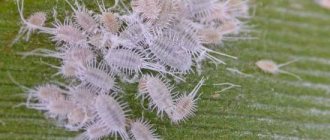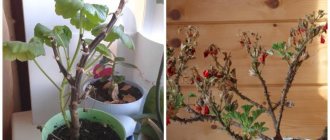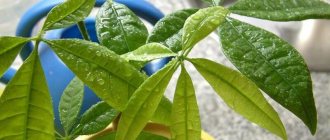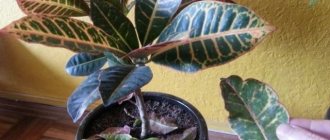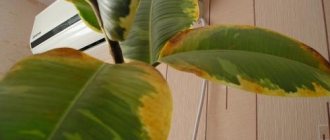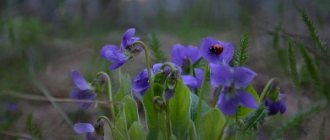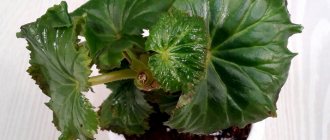The Decembrist's leaves and branches are falling - what could be the reason? What to do?
I don’t know why you didn’t respond to my comment, but I asked not out of idle curiosity, but out of a desire to help.
In order to find the cause of the disease and help the plant, you need to know its scientific name and the conditions under which it grew before the disease. A photo of the plant will be a good help in making a “diagnosis”. You personally come to see the doctor and talk in detail about what hurts, and do not tell him over the phone: “My stomach hurts. What to do?". “Decembrist” is most often called the epiphytic cactus Schlumbergera, although this plant can be confused with a variety of hatiora and ripsalidopsis. Although caring for one or another type of epiphytic cacti is generally similar, you need to know the exact name. The entire ground part of Schlumbergera is segmented shoots; there are no leaves.
“Leaf fall” of Schlumbergera can be caused by excessive dampness, especially in combination with a lack of light, transplantation into a pot for growth, periodic drying out of the soil followed by abundant watering. At the moment, it is not clear what the composition of the soil is, the frequency of watering, the level of lighting?
I'll tell you briefly about caring for Schlumbergera. The soil should be loose with the addition of a small amount of sand, pieces of charcoal, perlite (approximate composition), when replanting the pot is a little larger than the root ball by a couple of centimeters.
Water this cactus when the top layer of soil dries by about 1-2 cm, provided there is good lighting. During the period of active growth, especially in summer, stagnation of water at the roots (you cannot leave water in the pan for a long time), drying out of the soil. Watering is done so that all roots get water.
During the dormant period, in order to lay buds, the frequency of watering is reduced until the soil dries almost to the very bottom at a reduced temperature. A dormant period is arranged in early spring or autumn for healthy plants to set buds.
Only feed healthy plants with fertilizer for flowering plants or special fertilizer for cacti and succulents on moist soil.
Lighting should be bright, diffused. This cactus will do well opposite the south window, about a meter away from it; ideally, an east or west window would be suitable. Schlumbergera is afraid of the spring and summer scorching sun, but also does not tolerate partial shade and especially shade.
In your case, I would root several segments of small disposable cups in soil with perlite, if they are not thinned, but rather juicy and green. It is worth propagating the plant just in case the mother plant is on the verge and may die.
And the mother plant should be transplanted into a smaller pot, if necessary, at the same time inspect the roots for the presence of rot (it will have to be cut off), cancel fertilizing, adjust watering, increase lighting. If the lighting was low, then increase it to bright diffused light gradually. When watering, it is worth adding a couple of drops of the Zircon preparation to the water, and treating the leaves with a fungicidal agent (Skor, Hom, Topaz) against a possible fungal disease.
Why is the crown sluggish and soft?
Infections
These diseases oppress the base of the root system. This leads to a loss of connection between the above-ground and underground parts of the plant.
It seems to a florist that if he waters and fertilizes a flower, it means it should bloom and develop. But the whole problem is that only the roots are moistened, but the moisture does not reach the above-ground part. All these factors cause not only the withering of the leaves, but also the slow death of the plant as a whole.
Symptoms of infection can include more than just limp leaf blades. To the signs of an infectious disease, you can also add the falling off of parts of the Decembrist, as well as the paleness of the leaves or even the transformation of their green pigment into grayish. (But do not confuse the burning of leaves in the bright sun.)
Often, late blight and pythium diseases are accompanied by spider mite damage. This process is easily recognized by the rusty pigmentation on the leaf plate. The spots may be accompanied by the death of buds.
How to distinguish it from other ailments?
In order to figure out what exactly caused the leaves to wilt, you need to carefully examine the entire root system of Schlumbergera. When infected, only the tops of the roots rot, and in all other cases we are dealing with rotting of the deep central rhizomes.
Treatment
First of all, it is worth saying that the plant needs to be inspected as often as possible. Then you will be able to notice the infection in the early stages, which will help you cope with ailments without much loss. If the leaf blades have just begun to die due to infection by infectious diseases, then it is necessary to immediately treat them with fungicidal preparations. The most popular of them:
- Fitosporin.
- Maksim.
- Speed
- Topaz.
Root system diseases
It happens that no infections were found on the flower, but the leaves still wither for some reason. It could all be a matter of simple root rot. This happens for several reasons:
- too frequent and abundant watering;
- too low or, conversely, high indoor air temperatures.
If the Decembrist does not have time to “drink” the water, it begins to stagnate and form a so-called swamp. In cold conditions, the rhizomes begin to rot, and in extreme heat, the roots simply wither or burn. In one case or another, the underground part of the plant ceases to function normally and cannot fully provide for the above-ground part of the flower. This is why the leaf plates decline.
Remember that heat comes not only from the sun, but also from heating devices. Therefore, try to take this fact into account when choosing the location of the flowerpot.
How to restore it?
First you need to change the growing conditions for Decembrist:
It is necessary to select the appropriate room temperature and, of course, reduce watering. For a while, you can even stop watering altogether. And in subsequent times it is necessary to water only when the soil has completely dried out from the previous moistening of the substrate. You also need to check the size of the flowerpots. They shouldn't be much larger than a ball of roots. If the pot is too large, it will hold a lot of unnecessary moisture. Another condition for healthy rhizome growth is the presence of a drainage layer.
It is important to allow the underground part of the plant to breathe. Don't forget about proper watering technique
It is better to do this through a pallet. It would be a good idea to give Schlumberger a weekly warm shower or spray her every few days.
You can learn more about the rules for growing Decembrist here.
Excess fertilizer
The plant only needs monthly feeding, not more often. To do this, you need to choose ready-made complexes that are sold in specialized stores, but the dosage must be halved.
It is also recommended to use fertilizers intended for cactus: they contain a small amount of nitrogen, an excess of which will lead to burning of the root system. Therefore, in terms of feeding, it is better to underfeed than to overfeed.
Improper care
We have already said that the most important mistake in growing Decembrist is too much water.
Such errors also include inappropriate air temperature, and it does not matter at all whether the room is too warm or too cold (the optimal temperature is 18-22 degrees Celsius)
Follow these simple rules and then you will not notice limp leaves on your beauty.
Decembrist has problem leaves - what could be the reasons?
If the leaves of the plant become limp, then this is an alarming symptom. This condition can be provoked not only by the diseases of the Decembrist, but also by other factors. In this case, it is necessary to immediately take urgent measures to save the flower. You need to act depending on the main reason that could lead to the loss of turgor.
Decembrist's flaccid leaves are a sign that cannot be ignored
- root rotting;
- development of diseases;
- pest damage;
- inappropriate growing conditions.
After you can find out why the Decembrist flower withers at home, you can begin treatment. Therefore, every gardener should know what to do in a given situation, and what additional signs there may be.
How to make Decembrist bloom
Question: Can you tell me how to make Decembrist bloom. Mine is already two years old, but it is only growing leaves. I have it hanging in a flowerpot on the east window - it’s just falling into leaves. The window is not far from it. And my mother has it hanging there the same way, but it blooms every winter, although it’s not a cool place at all.
Kleo: To stimulate flowering, the Decembrist needs a cool place, then it produces buds. To flower, you need to stop watering for a while at the end of summer and place the plant in a cool room with a temperature of 15°C. And these plants grow and bloom well in partial shade.
Veta: I think mine is blooming, because, firstly, it stood on the windowsill, closer to the light - after all, it’s on the 16th floor; secondly, it was cold in the apartment; in the kitchen where he was, it was about 13-14°C all winter. He spent the summer on my loggia, standing in such a way that he didn’t get much sun - so, in the morning it was a little, but still light, and he fed it regularly along with all the other “Power of Life” fertilizers. Now it’s cooler on the loggia, I moved it to a brighter place. So he’s picking up buds more quickly.
Melnikov Vladimir:
- First, they should be planted in containers as small as possible (depending on their volume). You need to replant into a container such that the old bowl fits freely into the new one (i.e., about 1-2 cm larger per year). The frequency of replanting determines the abundance of flowering and growth itself. They all have a very poorly developed root system and do not require a large volume of soil. If you give more volume than they need, it is the roots that begin to develop, to the detriment of everything else. Do not forget that these are still epiphytic plants. And they grow like orchids.
- Second: they are all winter-flowering plants. And in order for them to bloom profusely, you need to give rest (15 degrees, with watering once every 1.5-2 weeks) from the beginning of October to mid-late November (depending on our unpredictable autumns, i.e. maintain the temperature, if it is higher, then you need to water!)
- And third: for flowering you need the brightest place in your apartment, air humidity (I already said that such plants are not suitable for the kitchen) and starting in the fall - do not twist, do not drag (i.e. rearrange) this plant anywhere. Next, if you have a cutting from an adult, flowering plant, then if these conditions are met, it will definitely bloom in the second year at most.
Diseases
If the rules of care are not followed, the plant’s immunity is significantly reduced. Against this background, its susceptibility to the effects of infections that can be transmitted through soil increases.
Common diseases that can cause loss of turgor and lead to the Decembrist beginning to shed its leaves:
- Late blight. The disease is characterized by the appearance of brown-gray spots on the lower leaf segments of the Decembrist plant. Their characteristic difference is the presence of a white border along the edge. Gradually, the spots increase in size, and the disease spreads from bottom to top. As a result, nutrients do not flow from the root to the top of the flower, since the affected areas are not able to perform their function. This leads to the fact that the leaves do not receive nutrition and become lethargic. An additional sign of the disease is massive loss of segments.
- Fusarium. The causative agent of the disease is the Fusarium fungus. It penetrates into open root wounds from contaminated soil during transplantation. Fusarium consists of highly branched mycelium that penetrates plant cells. Initially, the disease affects small root processes, then switches to large ones. Subsequently, the disease affects the root collar and reaches the leaves. The lower ones become sluggish, and the upper ones appear watery along the edges. Some areas take on a light yellow tint. At low temperatures (about +16 degrees), the disease spreads quickly. The fungus releases toxins that provoke browning and complete drying of the leaves of the Decembrist.
A characteristic sign of damage is the destruction of the root collar of the plant.
- Pythium. This disease is transmitted through contaminated soil. As a result of development, the root collar rots. Pythium is most often the reason why Decembrist does not grow and its leaves become limp. With further development, brown spots appear on the plates, and the affected segments fall off. The disease progresses at high humidity and temperatures of +26..+30 degrees.
- Bacterial rot. When infected, a brown, weeping spot forms at the base of the plant, which subsequently spreads up the stem. As a result, metabolic processes in tissues are disrupted, nutrients and moisture cannot reach the leaves of the plant. They begin to wither sharply and then fall off.
Why does the Decembrist not bloom?
Question: My Schlumbergera has been growing for several years, I try to care for it correctly, but why doesn’t Decembrist bloom?
ITALIA: In one of the books about cacti, I read advice that I have been using for many years. Schlumbergera (Decembrist) is a short-day plant. The formation of flower buds depends on both the length of daylight and temperature. If kept too warm in winter (above 23°C), strong vegetative growth and a complete absence of flower buds are observed. Lower temperatures (17-20°C) promote the formation of flower buds, but only under short days. At even lower temperatures (10-15°C), the formation of flower buds occurs regardless of the length of daylight hours. Contents below 10°C prevent the formation of buds. In this case, night temperatures play a major role. So, above 23°C - Schlumbergera will not bloom. 17-20°C - Schlumbergera will bloom if the day is short 10-15°C - it will bloom regardless of day length. Below 10°C - Schlumbergera will not bloom.
Kroky: To stimulate future abundant flowering, it is advised to pinch off plates - segments at the ends of shoots that have already faded.
Pests
Pests can also cause wilting and falling leaves. They feed on the sap of the plant, so the flower slows down and stops blooming.
Spider mite
This pest is difficult to see with the naked eye. The provoking factor for reproduction is dry air and elevated temperatures. The lesion can be recognized at the initial stage by small light dots along the edge of the segment. Subsequently, the affected leaves become covered with a thin cobweb and lose turgor.
Attention! Most often, the pest becomes active in winter, when the central heating is turned on, or in summer during hot periods.
To treat Decembrist affected by spider mites, it is necessary to use drugs such as Fitoverm, Actellik. The treatment is carried out by spraying the above-ground part. This must be done twice every 7 days.
Mealybug
This is a harmful white insect 3-7 mm long. Damage to a flower can be recognized by the appearance of a light fluffy coating at the junction of the segments. Also, the Decembrist's growth noticeably slows down, the buds wither and fall off, and brown or red spots appear on the opened flowers.
During the life of the mealybug, sticky mucus forms on the leaves of the plant, which becomes covered with a white coating. Against this background, the leaves become lethargic and may fall off, as their metabolic processes slow down.
To get rid of the pest, it is necessary to take comprehensive measures. To do this, it is recommended to spray the leaves and stem of the plant with any of the following preparations:
It is also recommended to pour the working solution into the soil mixture in the pot. Treatment must be carried out three times at intervals of 7-10 days.
Sometimes a mealybug can be found at the base of a flower, as it leaves oviposition in the top layer of soil
In case of mass reproduction, hot water helps eliminate the problem. To do this, you need to remove the plant from the pot. Then rinse with running water at a temperature of 45-50 degrees, additionally manually remove pests and thoroughly wash the root system from the soil.
After this, soak the Decembrist completely in the insecticide solution for a couple of hours, allow it to dry, and then plant it in a new substrate.
Shchitovka
The pest begins to actively reproduce at high humidity combined with moderate temperatures. It can be found on the underside of the leaves and along the main stem.
The scale looks like a small brown bump that can be easily removed with a fingernail. As a result, yellow spots initially appear on the leaves, and subsequently they fade. In addition, the affected flower drops its buds and stops growing. If left untreated, the Decembrist withers completely.
Important! Most often, the scale insect attacks the plant in the fall, so during this period it is necessary to carefully inspect the Decembrist.
To save a flower when pests appear, it is necessary to completely remove the wilted leaves and then treat the plant with Fitoverm, Actellik. And additionally spill the substrate with Aktara working solution (1.4 g per 6 liters of water). The plant must be treated twice every 7 days.
Causes of the disease and their elimination
Errors in care
The most common problem is due to improper care. Like all cacti, the Decembrist is calm about dry soil or rare fertilizing. According to experts, the rule applies to zygocactus: it is better to under-supply than to transfer. To preserve the decorative quality of Schlumbergera, you need to know the causes of the problem.
Dry leaves are caused by excessive sunlight, too dry air and stressful situations. To avoid drying out of the leaf plates, it is better to place the flower on the windowsills of western or southwestern windows. If it is impossible to place the pot with the plant away from the bright sun, the epiphyte must be shaded.
If the Christmas tree has soft leaves or drops them, it means the plant has problems with the root system or is infected with parasites.
Too wet soil and excessively low or high air temperatures cause rotting of Schlumbergera roots and the development of putrefactive processes in the pot. This happens due to overwatering and when the pot overheats, when the roots melt and burn. Most often, overheating of the pot occurs because the flower is standing in the sun or directly above the central heating radiator. In overheated soil, fermentation processes easily occur, leading to the death of the flower. also leads to burning of roots .
Damage to the root system can be determined by observing the plant: if the flower is unstable or comes out of the soil, then the roots of the cactus have rotted. You can revive the Christmas tree:
- rooting living healthy segments to produce new seedlings;
- transplanting the diseased flower into another container, removing the dead part of the roots.
Fungal diseases
Another reason is hidden in fungal diseases. If the zygocactus has withered, turned pale and is rotting at the root, it means the plant is infected. Most often, the Decembrist falls ill:
- late blight;
- pythium (a type of root rot);
- fusarium.
Basically, plant infection occurs through infected soil. Some diseases develop very quickly. So, pythium can destroy a flower within a few hours. The disease begins with damage to the roots, then the buds and leaves wither and fall off. As a result, the plant dies. With late blight, the plant trunk turns yellow, starting from the root collar, the leaves become soft and fall off. With fusarium wilt, the leaves of zygocactus are not fleshy, but dry and covered with light green or yellowish spots.
To prevent and combat late blight and pythium diseases, Decembrist is treated with solutions of drugs:
- “Skor” – 0.5 ml per half liter of water;
- “Maxim” – 5 drops per two hundred gram glass of water;
- “Topaz” – 1 ml per 5 liters of water;
- “Vitaros” – 0.5 ml per 0.5 liter of water, twice with a break of 10 days.
When affected by Fusarium, treatment can only help at an early stage of the disease. The flower can be treated with a solution:
- "Fitosporina";
- "Sporbacterin";
- the drug "Mikol" and other antifungal agents.
If the disease is advanced, it is impossible to save the Decembrist. All that remains is to burn the diseased plant, and disinfect the soil and pot.
To prevent infection of the flower, a few days before planting, the soil substrate should be treated with boiling water, and a couple of days before planting, the biological product “Trichodermin” or its analogues should be added to slightly moist soil.
Parasite infestation
It is not only fungus or root rot that leads to the death of the Decembrist. If the leaves dry out and turn yellow, and when examined, yellow-brown spots up to half a centimeter in size are noticeable on them, it means that the flower has a sucking pest - scale insects. Despite its miniature size, this parasite causes significant harm, and if you do not pay attention to the problem in time, the plant will die. The most suitable environment for scale insects to reproduce is very humid air . But the insect does not like high temperatures, which can be used to prevent the development of the affected area.
To combat the parasite, mechanical cleaning of the leaves with a cotton swab dipped in a solution of Karbofos or Tanrek is suitable. If insecticides are not available, home remedies will do.
- Dissolve 40 grams of laundry soap and 5 drops of kerosene in 1 liter of water. Stir thoroughly. Rub the mixture onto the affected areas;
- Infuse one finely chopped onion in a glass of water for 2-3 hours.
Late blight disease is often accompanied by spider mite infestation. The small green, red or brown insect thrives in warm and very dry climates, causing stunting, wilting and leaf shedding. To combat this parasite, spray with Fitoverm, Apollo and other anti-mite insecticides containing phosphorus and sulfur. After a few days it is necessary to re-treat. The duration of the break depends on the temperature in the room:
- at 19° C, repeat treatment after 8-10 days;
- at 28° C and above, wait 3-4 days.
Folk remedies to combat spider mites include spraying the leaves with a solution of laundry soap.
Leave the applied solution to dry completely for a couple of hours, after which carefully wash the Christmas tree with clean water, removing any remaining soap, and cover with a plastic bag for a week or a little longer. After 7 days, re-treat and at the same time increase the air humidity.
Soil moisture
The reason why the Decembrist flower withers at home may be improper care, and in particular watering. It is necessary to moisten the soil in the pot depending on the temperature. You can determine whether the Decembrist needs to be moistened by the condition of the top layer of soil. If it has dried out, then the flower needs to be watered.
- In hot conditions, it is necessary to moisturize 1-2 times a week, depending on the rate of moisture evaporation.
- And at low temperatures, watering should be moderated to once every 2 weeks.
Excessive moisture sometimes leads to redness of the leaves of the Decembrist. By this sign you can identify the problem. The leaves of the Decembrist turned red, what to do in this case? It is necessary to adjust the watering regime, and if this does not bring a positive result, then you can help the flower by replanting it in new soil.
It is necessary to water the Decembrist with settled water.
If the leaves have lost turgor as a result of the roots drying out, then the plant can be restored by abundant watering in the tray, as well as by spraying the above-ground part.
Reasons and measures to help if the bush turns red
Improper care
Red leaves appear for a number of reasons:
- Lots of bright lighting. This often happens in spring and summer, when the plant is just emerging from winter. Therefore, it is better not to place the plant in very sun-exposed areas of the premises.
- Incorrectly selected fertilizers. It is important to ensure that the nutritional complex contains sufficient phosphorus.
- Red leaves are the first sign of overwatering. Regulate this process.
Growth of new segments
This is absolutely not a terrible reason. On the contrary, it means that the Decembrist is growing and fully developing. In this situation, only the tips of the leaf blades will turn red. As new parts of the flower grow, this redness will go away on its own.
Air temperature
The reason why Decembrist's leaves turn red and wither may be hypothermia of the flower. For the Decembrist, a temperature of +14 degrees is considered critical. With it, necrotic processes begin in plant tissues. With a further decrease, the plant begins to fade sharply. Initially, the upper leaves lose turgor, and then the rest.
The flower can only be saved by raising the temperature to +18 degrees or more with moderate watering.
Only by knowing the main reason why Decembrist leaves turn red and wither, and what to do in this situation, can the plant be restored, otherwise it will die.
Increased air temperature can also provoke a problem with the leaves of the Decembrist. With insufficient watering, the plates intensively evaporate moisture, and have no way to replenish it. Therefore, it is recommended to water the plant regularly during hot periods, preventing the earthen clod from drying out. You should also additionally spray the above-ground part in the morning so that the flower has time to absorb moisture before the evening.
Decembrist does not bloom for several years - reasons
Complaints from flower growers that Decembrist does not bloom are quite common. It is worth remembering one truth - if a flower does not throw out buds, then the conditions of detention are violated. The reason may be failure to comply with one or more conditions, which we will discuss in detail.
Watering
Excess moisture, as well as its lack, contributes to drying or rotting of the flower. Try not to let the soil in the pot dry out. The plant should receive water in equal portions at regular intervals.
Set up a schedule to mark the day or date of watering. It is recommended to water the leaves with a watering can with a water spray, a shower spray or a spray bottle for 5-10 minutes. This creates an imitation of tropical rain and refreshes the plant.
Make sure that after watering there is no water remaining in the stand under the pot.
Spacious potty
Since Decembrist is an epiphyte, its root system is poorly developed. This means that when replanting, you need to be especially careful when choosing a pot. A deep and wide container does not suit him. Ideally, the pot should be wide and shallow, and you can choose the optimal one according to the diagram: the length of the stems should be three times the depth of the pot.
When planted in a deep container, the flower’s energy is spent on the formation of the root system. In this case, the plant itself develops poorly, and it does not have the strength to form buds and flower.
Diseases and pests
Most often, at home, Schlumbergera suffers from attacks by mealybugs, scale insects and spider mites.
Due to damage by spider mites, the zygocactus sheds a significant part of the segments and buds.
The plant is also susceptible to the development of fungal diseases such as late blight, fusarium, and pythium. Most often they develop in a weakened flower and further aggravate its condition. If you do not notice the symptoms in time or ignore them and do not take measures to treat the zygocactus, it may die.
Fertilizer shortage
From March to August, the Christmas tree, as the flower is also called, actively grows and produces new foliage. At this time, it is necessary to fertilize weekly with fertilizers suitable for cacti. It is better to choose those drugs that are added to the water at the time of watering.
Air humidity
Schlumbergera responds well to spraying. In summer, especially at high air temperatures, it is necessary to regularly and generously spray the plant with a spray bottle.
Lack of lighting
The lack of intense light during the day in September-October negatively affects the flowering of Schlumbergera, preventing the plant from setting flower buds.
At the same time, zygocactus does not need long daylight hours; it needs only 2 to 4 hours of intense sunlight, preferably during sunset or sunrise, which eliminates the need for additional lighting in the cold season.
In the autumn-winter period, the Decembrist needs 12 hours of complete darkness, this gives the plant the opportunity to rest.
Transfer
Decembrist does not bloom even if there is no replanting for a long time. It has a beneficial effect on the overall development of the plant. This is especially necessary for young flowers, as they grow quickly and constantly need nutrients. A young plant needs to be replanted once a year, and a mature plant once every 4 years.
During replanting, it is necessary to completely renew the soil, as it becomes less nutritious and its structure becomes compacted. Such soil poorly allows not only water to pass through, but also air, which is necessary for ventilation of the root system. The result is stagnation of moisture, rotting of roots and the appearance of diseases. In this state, the Decembrist is unlikely to bloom.
Along with the soil, it is necessary to change the flowerpot and choose the right size. It should be 2–3 cm larger than the previous one. The pot should be shallow and wide, since the roots of the plant are located in the top layer of soil. If the container is too large and deep, the flower will spend all its energy growing roots and filling the pot with them. As a result, there is no longer enough energy to bloom.
Root rotting
Stagnation of moisture in the soil at the level of the root system can provoke wilting of the leaves of the Decembrist. The problem can be identified if the plant sits unsteadily in the soil and wobbles with a slight impact, and also if it can be easily pulled out of the pot. This occurs as a result of the death of root processes that are unable to fully function.
The main causes of decay:
- insufficient number of drainage holes in the pot;
- keeping the flower cool combined with abundant watering;
- presence of drafts in the room;
- use of heavy soil for planting that retains moisture.
Root rot leads to sudden wilting of foliage
You can revive the plant if the problem was identified at the initial stage. In this case, it is recommended to limit watering and spill the substrate with a working solution of the drug “Maxim” or “Previkur Energy”.
If root rot was detected late, then the only way to save the Decembrist flower is to root the apical segments. To plant cuttings, you need to mix leaf soil with river sand in a 1:1 ratio.
For reference! You can speed up rooting using “Kornevin” or “Heteroauxin”. To do this, when planting, the lower tips of the segments must be powdered with the preparation, and then planted in the soil.
Reasons for dropping buds
The moment of formation of buds on the Decembrist is the most exciting. The flower is about to perform its swan song. How to care for it during this important growing period?
Immobility of the pot
The gardener needs to follow the main rule: the pot must stand in the same place. Therefore, the container cannot be rotated, for example, so that buds and blossoming flowers can be seen. It is forbidden to move the cactus to another place.
I also have a Decembrist growing up at work. There it is more inclined to bloom than a house flower. Only one day something bad happened - a bud fell off. At first I thought about my colleagues, and then I remembered how I wiped the dust and turned the pot so that the plant looked better on the windowsill.
Watering
It happened that I forgot to water. Because of this, the plant depleted its reserve of strength. Despite the fact that this is a succulent that is resistant to loss of moisture in the soil, the test turned out to be overwhelming. That's why the flowers fell off.
No diseases or pests
Zygocactus, like any other plant, can get sick. With frequent watering, the presence of dampness can activate the growth of harmful microorganisms. Hence fusarium, late blight, phytium.
Attacks by spider mites and mealybugs are a common problem that Schlumbergera owners encounter. I am also familiar with this misfortune. Gray spots appeared on the leaves, which were removed with a finger or washed off.
Showering and cleaning with soapy water did not give any results. Only insecticides helped in controlling pests.
Natural conditions helped cure the Decembrist.
Warm and draft-free
If you open a window in winter and leave the plant for a long time, you will not be able to harden the Decembrist, it will drop its inflorescences. The flower will not continue its genus in extreme conditions.
How to make a plant bloom
In addition to dropping buds, a common problem is lack of flowering. In order for the plant to produce buds, you need to create certain conditions and care according to the scheme.
- At the end of September, I put the pot in a cool place and reduce watering.
- After a month, I provide the zygocactus with warmth and abundant watering.
- I apply complex mineral fertilizer.
Other Possible Problems
If it was not possible to establish the reason why the leaves of the Decembrist turned red and began to fade, then other options should be considered.
- Excessive fertilization. Decembrist belongs to the category of home flowers that tolerate a lack of nutrients better than their excess. An increased concentration of fertilizers has a depressing effect on the roots of the plant and burns them. In this case, the plant drops its buds and its leaves become limp. For feeding, it is recommended to use fertilizers intended for cacti, reducing the indicated dosage by half.
- Cramped pot. For full growth and development, the Decembrist must be regularly replanted. Over time, the plant's roots completely fill the pot, as a result of which water cannot accumulate in the substrate. Therefore, the plant experiences a lack of moisture between waterings and, as a result, its leaves begin to fade.
- Lack of nutrition. A lack of phosphorus in the soil can also provoke a loss of turgor. Feeding the Decembrist needs to be done correctly. During the period of active growth of green mass, it is necessary to use fertilizers with a high nitrogen content, and starting in the fall, transfer the plant to phosphorus-potassium products, which will strengthen the immune system and improve flowering.
Timely replanting helps prevent foliage from wilting
Knowing why a Decembrist flower can fade at home, you can determine the cause and carry out appropriate treatment. But you need to act quickly, as a weakened plant may die. Therefore, in order to prevent a similar situation from reoccurring in the future, it is necessary to adhere to simple rules of care, as well as periodically inspect the Decembrist. The sooner the problem is detected and corrected, the less harm it will cause to the plant.
Basic rules for growing Decembrist
Decembrist is one of those plants whose buds bloom in winter. In order for the plant to grow well and bloom at the right time, you need to follow some growing rules. The location is chosen to be bright, but without direct sunlight. The temperature in summer should be within +18...+20 °C, and in winter -+13...+15 °C. It is important not to forget about the high level of humidity.
Did you know? According to recent research by German scientists, a small degree of toxicity of zygocactus has been established. Based on this, people suffering from asthma and other upper respiratory tract diseases are not recommended to have such plants in their homes.
What to do if the Decembrist withers? Why does this happen and how to fix the problem?
Bright Decembrist flowers delight their owners every winter. It’s not for nothing that this popular houseplant is also called the Christmas tree.
The buds appear in November and until the end of February you can admire the delicate scarlet petals.
Although Schlumbergera's zygocactus (lat.Schlumbergera) prefers non-standard growing conditions for cacti, it is still quite unpretentious in cultivation. However, troubles happen to him too. The most common problem is leaf wilting.
Why does the forest cactus wither?
Let's consider all possible reasons:
Excess fertilizer
Like many indoor plants, Christmas tree tolerates a lack of fertilizer better than its excess .
In the wild, this type of cactus lives in tropical forests, practically without soil, located on the trunks and aerial roots of large trees.
Feeding the Decembrist must be done correctly and interrupted during the flowering period - excess fertilizer will burn the roots, dropping buds and wilting of the leaves are almost guaranteed.
Root system rotting
Root rot usually occurs due to stagnation of water at the level of the root system.
If the plant sways, sits unsteadily in the ground and seems easy to pull out of the pot, this is a signal of problems with the roots. This can happen for a number of reasons :
- Lack of sufficient drainage holes in the plant pot. Watering too much will make the situation worse.
- The cold in the room where the Christmas tree is located, coupled with excessive watering, can cause acidification of the soil and rotting of the roots.
- The death of the roots can be a consequence of overheating, both due to the location of the pot with the cactus in the sun, and as a result of the heat coming from the battery.
Infections
Decembrist's limp leaves may indicate the presence of an infection.
Most often, zygocacti suffer from fungal diseases , such as late blight, fusarium, phytium, which are transmitted with contaminated soil.
These infections are aggravated by waterlogged soil and insufficient drainage. They are easy to identify: late blight affects the base of the plant root, the connection between the root system and the stems is disrupted, which leads to dehydration of the Christmas tree even with sufficient watering. Fusarium also manifests itself in approximately the same way.
Decembrist flower - features
All plants have their own characteristics. The main feature of the Decembrist is that it blooms when other flowers are resting. But he also has other qualities that distinguish him from all the other inhabitants of your windowsill.
- Firstly, the Decembrist is uncomfortable on southern and western window sills, since intense lighting can cause the terminal segments of the plant shoots to die off.
- Secondly, in the summer, the Decembrist, like no other indoor plant, needs fresh air: a shaded place on a balcony, loggia, or terrace is suitable.
- Thirdly, in the summer, the Decembrist likes to take a shower, but if this is not possible, then at least spray it from time to time.
- Fourthly, with good care, a long-lived Decembrist can congratulate you with his bouquet on the New Year for about 15-20 years.
- Fifthly, the Decembrist flower is one of those capricious plants that cannot be disturbed at the moment of budding - rearranged from place to place and even turned the pot with the plant.
- Sixthly, Decembrist can be grown as an ordinary plant, or as an ampel plant.
You will gradually learn about other features in the following sections of the article.
What to do to help the plant?
In case of overdose of fertilizers
Replanting the plant will help . For this:
- You need to choose a pot suitable for the plant - the Decembrist prefers not too deep pots and blooms in them much more readily.
- Buy special soil for cacti and add drainage to one third of the pot.
- Remove the plant, remove damaged roots and plant in new soil.
- Do not feed for at least a month after transplanting.
In case of root damage
If the process has not gone too far, temporarily canceling watering and maintaining high air humidity will help. Next, adjust the watering regime, bringing it into line with the air temperature - the lower it is, the less moisture is required.
If the roots are almost lost and the plant has suffered greatly, it should be re-rooted:
- Pinch off a few leaves, put them in water and plant them in the ground after the roots appear. Usually roots appear in 10-12 days. You can read more about rooting Schlumbergera cuttings here.
- Transplant the old plant into new soil for cacti; when replanting, remove rotten roots and treat the remaining ones with a weak solution of potassium permanganate.
- After transplanting, water very sparingly and only through a tray.
In case of infection
If the infection is not too advanced, the plant should be treated with fungicides. Any of the mass-produced medicinal drugs, such as Fitosporin, Maxim, Skor, Topaz, will do.
Important! The entire plant must be treated, paying special attention to the root collar.
If the disease is advanced and the plant is seriously damaged, you must first replant it in new soil and then treat it with the drug. Fresh soil will help the plant recover faster .
When attacked by parasites
Whatever parasites settle on the plant, first of all you need to remove them from the leaves as much as possible. First, wash them off with a warm shower, then carefully wipe the leaves with a cotton pad and a solution of laundry soap.
Treat the dried plant according to the instructions with one of the following insecticides: “Aktellik”, “Fitoverm”, “Neoron”, “Aktara”. Carry out the processing in several stages. The outer surface of the pot and the window sill should also be disinfected to destroy possible pest larvae.
If Schlumbergera is weakened by improper care
It is necessary to create conditions for the Decembrist that are as close as possible to the conditions of the plant’s “native” tropical forest.
Main factors:
- Lack of direct sunlight, diffuse lighting. Place the pot on the western or eastern windowsill or at the back of the room.
- Sufficient air humidity. Achieved by regular spraying with soft, warm water, especially during the heating season. In especially severe cases, you should place a container of water next to the pot.
- Stable air temperature from +20 to +25 degrees. The plant should not be placed on a southern windowsill; drafts should also be avoided.
- Regular, moderate watering. If for some reason the plant is very dry and the leaves have lost their tone, you need to water it through a tray and spray it generously with warm water.
- Feed the Christmas tree twice a year with complex fertilizer, halving the recommended dosage.
Why has there been no flowering for several years? How can I get the zygocactus to bloom?
There are no exceptions in cases when the Christmas tree has stopped blooming and has not been blooming for several years, it stops its growth, and in order to understand what to do, you need to understand the reasons why Schlumbergera does not bloom:
- lack of proper lighting (little light);
- inappropriate pot size, which should be medium to avoid excessive root growth;
- unsuitable soil;
- lack of watering and lack of fertilizing;
- The plant has not been replanted for several years.
To bring the Christmas tree back to life and make it bloom, you need to remove the plant from the pot and carefully inspect the root system for damaged or dry areas.
If any are found, then it is necessary to eliminate them and wipe the sections with an antiseptic or sulfur. Next, you need to move the Schlumbergera into a special soil for cacti; if necessary, you can change the pot to a more suitable one.
Important! After replanting, you should restore watering to the plant, fertilize it with nitrogen fertilizers and place the pot in a bright place, but avoiding open sunlight. After the “operation”, the Christmas tree will definitely begin to grow. Unfortunately, Schlumbergera often actively develops, but does not bloom for several years
Unfortunately, Schlumbergera often actively develops, but does not bloom for several years.
Seasoned flower growers recommend arranging a “drying” for the Christmas tree:
- Take it to a cool place and stop watering.
- After 2-3 weeks, the Decembrist is returned to the warmth and begins to water and fertilize as usual. After such a stressful situation, in most cases, buds appear on the plant, and after 2 months the flowering period begins.
Here's how to adjust the seasonal cycle and make the Christmas tree bloom in winter.
